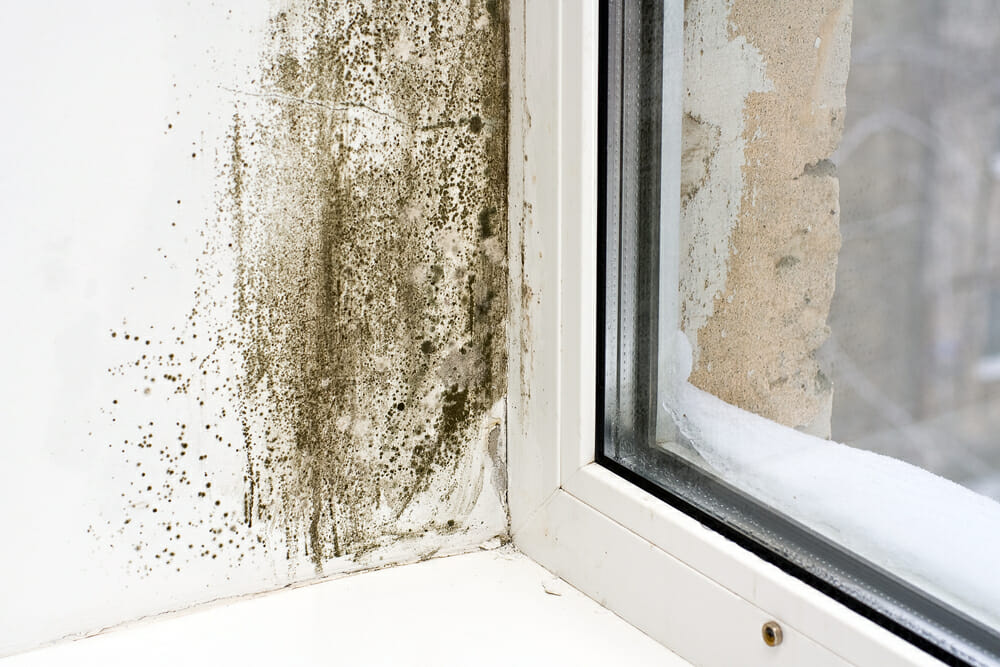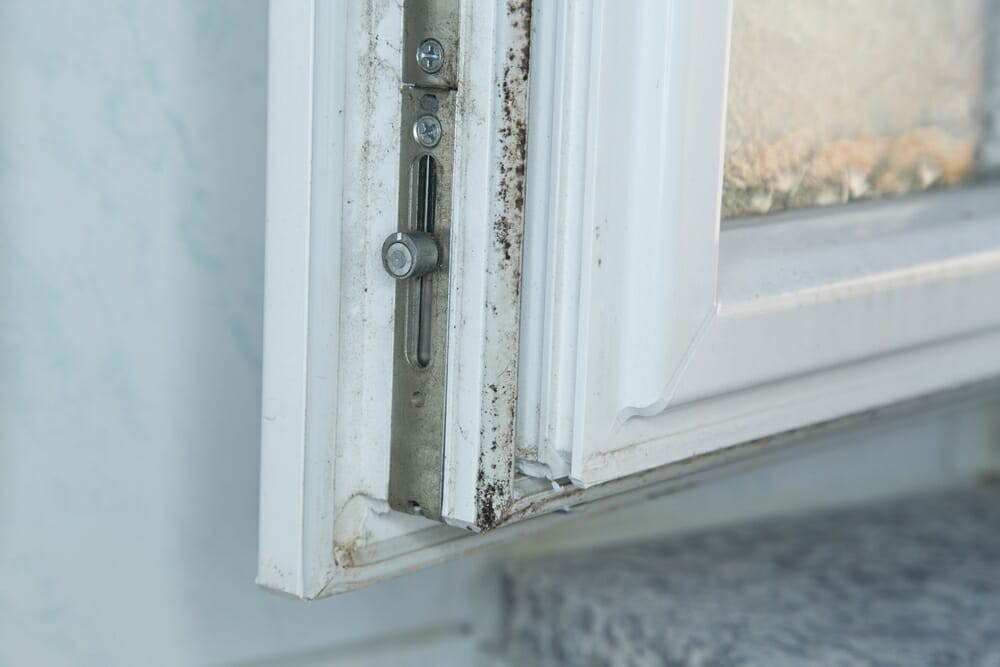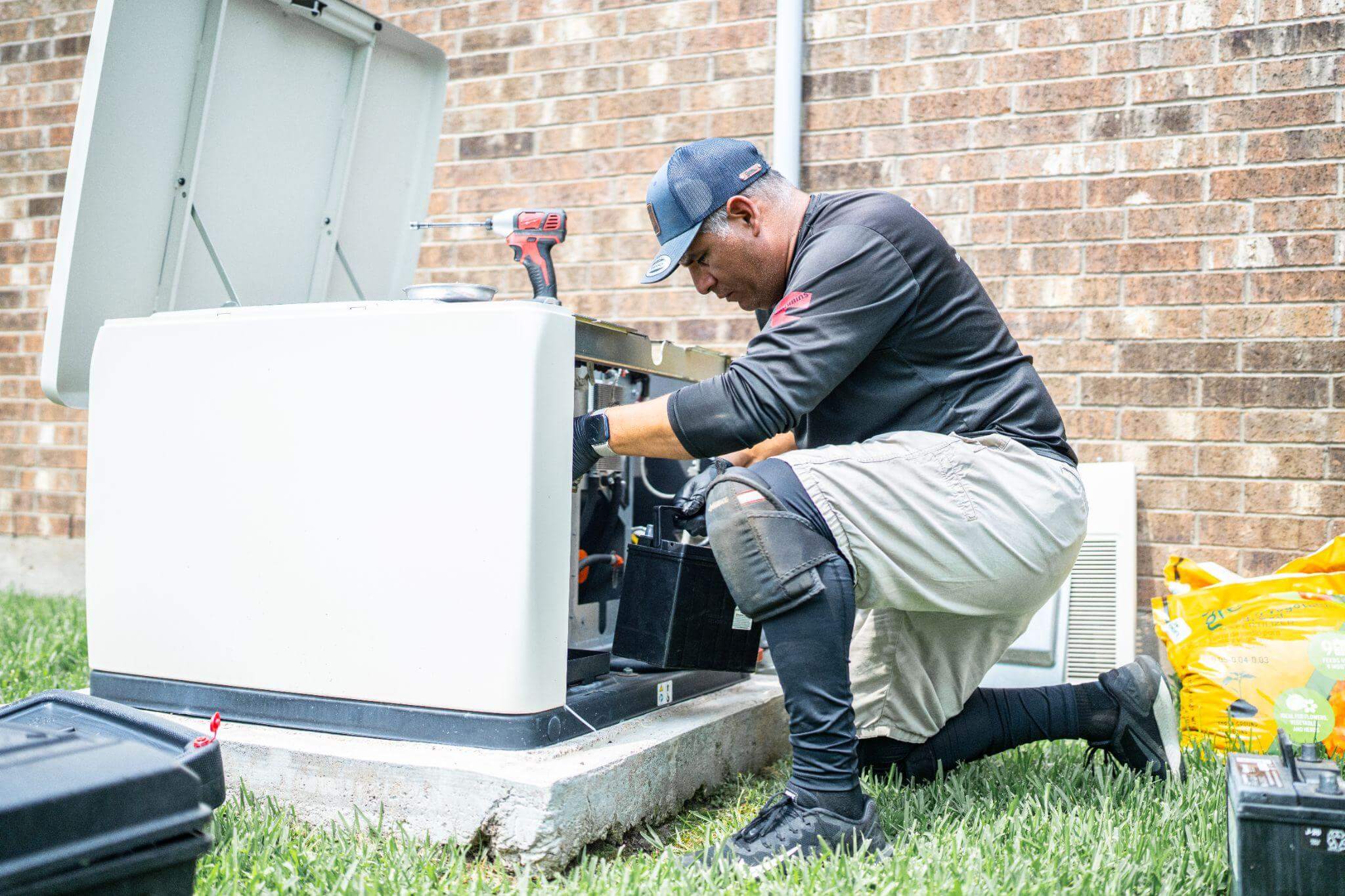Are you doing a windows project?
Modernize can pair you with three to four pros in your area, so you can compare options and save time and money.
Mold. It’s unsightly, it makes your home look dirty, and worst of all, it’s dangerous to your health — it’s even been found to cause a variety of respiratory problems. So what should you do if you discover mold growing on your windows? Most importantly, get started as soon as possible to clean it up and figure out why it might be forming in the first place, because mold only gets worse over time.
Ten Steps to Resolve Mold Problems

Find the Cause
Molds are microscopic fungi that grow easily in moist, somewhat dark conditions. Molds can develop in bathrooms, under kitchen sinks, in places where water has leaked into walls or floors, or in insulation that has gotten wet. Mold on window sills can develop in and around window frames. This happens when the windows leak rain in from the outside, or when moisture condenses on the windows in a bathroom after a shower. If mold has developed around a window in your living room, bedroom, or basement, find out how water is getting into the frame. If you notice mold around windows in the bathroom, the problem may be as simple as a lack of ventilation.
Remove the Window, Clean or Replace the Frame, and Fix the Leaks
If mold infiltrates your window frame, you’ll need to take out the window for either a thorough cleaning or frame replacement. Make sure to discard any damp insulation or framework, and dry any remaining parts completely. Lastly, ensure any openings around the window and frame are sealed to prevent further complications.
Check the Roof and Gutters
If there aren’t clear window leaks, your roof might be leaking or your gutters could be clogged. Both issues can channel water into your home, potentially exiting via the window frames. Examine both your roof and gutters to ensure they aren’t the culprits.

Find the Right Contractor for Your Windows Project
Whether you’re ready to begin your project now or need some expert advice, our network of contractors are here to help. With a few simple questions, we’ll find the best local professionals for you
Redirect Water Away from Your Home
Basement windows can become damp due to their proximity to the often-saturated ground from rain, snow, or lawn watering. To address this, ensure proper drainage away from the home and these lower windows. Installing a window well can further shield your basement windows, preventing water infiltration and potential mold growth. Windows, especially during winter, can experience condensation which can then trickle into the frames, leading to mold. Occasionally, ice may form inside the windows, and upon melting, seep into the frames. Placing a towel at the base of the frame, adjacent to the glass, can help soak up this moisture before it affects the frame.
Reduce Humidity and Moisture in the Bathroom
If your bathroom windows are moldy, most likely it’s because there’s not enough ventilation. To maintain optimal air quality and prevent window condensation during baths or showers, always activate your bathroom fan. Enhance ventilation by keeping a window ajar and allowing the bathroom door to remain open after you finish. This ensures multiple avenues for steam to dissipate. If your bathroom doesn’t come equipped with a built-in ceiling fan, consider placing a portable fan strategically to foster air circulation and expedite moisture evaporation.
Use Bleach to Clean up the Mold
There are several enzyme-based products on the market, but a diluted solution of bleach and water works best for eradicating mold. The U.S. Centers for Disease Control recommend using a mixture of one cup of bleach to one cup of water. Never mix bleach and ammonia together! While wearing gloves and a face mask to guard against bleach fumes, apply the cleaning solution either by spraying it directly on the mold or using a sponge to scrub it off. Persistently spray and scrub, refreshing the sponge in the bleach solution as needed, until all mold traces have been eliminated.
Monitor Your Windows
Mold is notoriously difficult to destroy. Once you’ve cleaned your windows and addressed the source of the problem, keep a watchful eye on your windows to make sure the mold doesn’t return. If you notice water puddling on a windowsill or condensing on the window frames, wipe them up immediately.
Keeping Windows Mold-Free
Confronting mold on your windows can be a daunting task, but with the right preventive measures and timely action, it’s a challenge homeowners can overcome. Remember, mold not only affects the aesthetics of your windows but can also have health implications for your household. By ensuring proper ventilation, regular cleaning, and addressing any moisture concerns promptly, you can maintain clear, mold-free windows that both enhance your home’s beauty and ensure a healthier living environment.
Find the Right Contractor for Your Windows Project
Whether you’re ready to begin your project now or need some expert advice, our network of contractors are here to help. With a few simple questions, we’ll find the best local professionals for you
Reviews from Real Homeowners
Welcome to Homeowner Resources! We are the Modernize blog. Modernize pairs more than 3 million homeowners a year with pre-vetted contractors in their area. This blog started because we believe homeowners should know everything about their homes, from how their HVAC works to which front door colors they might love. On Homeowner Resources, you can find information on every part of your home, right down to how you can negotiate with contractors to get the best price. Here's more about the blog.
Need a contractor? Learn more about how Modernize finds the right pro for you.


